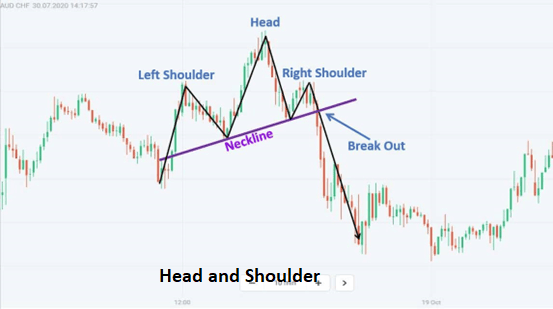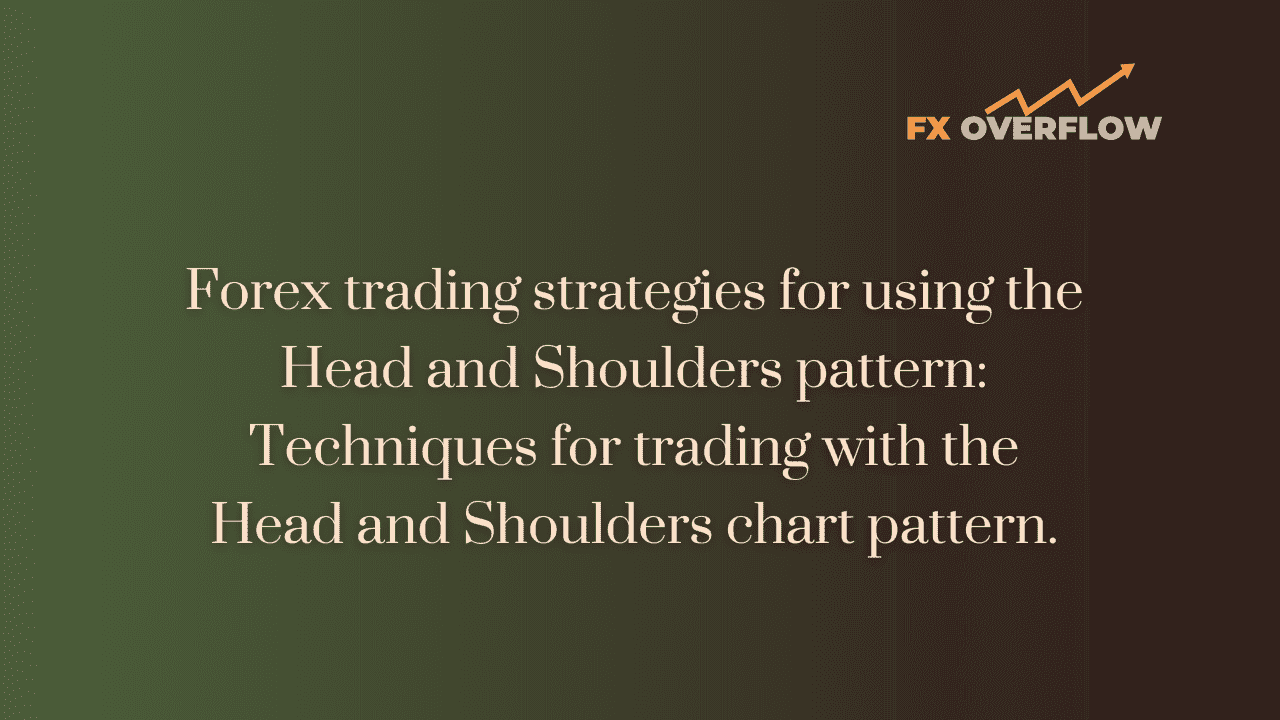Forex Trading Strategies for Using the Head and Shoulders Pattern: Techniques for Trading with the Head and Shoulders Chart Pattern
The world of forex trading is replete with a plethora of technical analysis tools and chart patterns that traders use to make informed decisions. One such pattern that has garnered significant attention and acclaim is the Head and Shoulders pattern. This pattern, when understood and utilized correctly, can provide traders with valuable insights into potential trend reversals and entry/exit points. In this article, we will delve into the intricacies of the Head and Shoulders pattern and discuss effective forex trading strategies for leveraging its power.
Table Content
I. Understanding the Head and Shoulders Pattern
1. Left Shoulder
2. Head
3. Right Shoulder
4. Neckline
II. Trading Strategies for the Head and Shoulders Pattern
1. Identifying the Pattern
2. Waiting for Confirmation
3. Measuring Price Targets
4. Managing Risk
5. Multiple Timeframe Analysis
6. Consider Fundamental Factors
7. Practice Patience
III. Footnote
Understanding the Head and Shoulders Pattern
The Head and Shoulders pattern is a widely recognized technical analysis pattern that typically signals a reversal in the current trend. It forms after an uptrend and consists of three distinctive peaks – a higher peak (the head) flanked by two smaller peaks (the shoulders). The pattern is visually reminiscent of a human head and shoulders, hence its name. The central peak (head) is the highest, while the surrounding peaks (shoulders) are relatively lower but approximately equal in height.

The pattern is defined by the following key components:
1. Left Shoulder: This is the first peak that forms after a sustained uptrend. It marks the beginning of the pattern and is usually formed as the result of a price surge followed by a slight retracement.
2. Head: The central and highest peak in the pattern. It is formed as the result of a strong price increase followed by a notable retracement. The head is typically higher than the shoulders and serves as a pivotal point in the pattern.
3. Right Shoulder: The third peak in the pattern, which forms after the head. Similar to the left shoulder, it is characterized by a smaller peak preceded by a price increase and followed by a retracement.
4. Neckline: The neckline is a horizontal line that connects the troughs between the two shoulders and the head. It acts as a support level that plays a significant role in confirming the pattern and signaling potential trend reversals.
Connecting the troughs between the shoulders and the head creates a neckline, which is a support level. A break below this neckline is often seen as a strong signal that the pattern is complete and a reversal to a downtrend might be imminent.
Trading Strategies for the Head and Shoulders Pattern
Effectively trading using the Head and Shoulders pattern requires a comprehensive understanding of its formation, confirmation signals, and risk management techniques. Here are some strategies to consider:
1. Identifying the Pattern
The first step in trading any pattern is accurate identification. Traders should have a solid understanding of what a Head and Shoulders pattern looks like and be able to distinguish it from similar patterns. Utilizing trading platforms with drawing tools and pattern recognition features can greatly assist in this process.
2. Waiting for Confirmation
While the formation of the pattern is a good indicator of a potential trend reversal, it's essential to wait for confirmation before entering a trade. Confirmation typically involves a decisive break below the neckline after the right shoulder is formed. This break is often accompanied by increased volume, signaling the conviction behind the reversal.
3. Measuring Price Targets
Traders can use the Head and Shoulders pattern to estimate potential price targets once the neckline is breached. This is done by measuring the vertical distance from the head's peak to the neckline. This measurement is then projected downward from the point of the neckline break. However, it's important to note that this is a rough estimate, and other factors should be considered.
4. Managing Risk
As with any trading strategy, risk management is crucial. Placing a stop-loss order just above the right shoulder's peak can help limit potential losses if the pattern fails to materialize into a trend reversal. Additionally, traders should avoid risking a large portion of their capital on a single trade.
5. Multiple Timeframe Analysis
Analyzing the Head and Shoulders pattern across multiple timeframes can provide a more comprehensive view of its validity. If the pattern is evident on both shorter and longer timeframes, it strengthens the potential effectiveness of the pattern.
6. Consider Fundamental Factors
While technical analysis is a powerful tool, it's important not to overlook fundamental factors that might impact currency movements. Major economic announcements, geopolitical events, and shifts in market sentiment can all influence the success of a trading strategy.
7. Practice Patience
Trading can be exciting, but impulsive decisions can lead to losses. Patience is key when waiting for confirmation signals and favorable entry points. It's better to miss a trade opportunity than to enter prematurely and incur losses.
Footnote
The Head and Shoulders pattern is a potent weapon in a forex trader's arsenal when used correctly. It provides insights into potential trend reversals and offers entry and exit points based on a well-defined structure. However, it's important to remember that no trading strategy is foolproof, and risk is inherent in forex trading. Traders should combine technical analysis with prudent risk management and a clear understanding of market fundamentals for the best chance of success. As with any trading strategy, practice, continuous learning, and adaptability are essential for navigating the dynamic world of forex trading.











Discussion